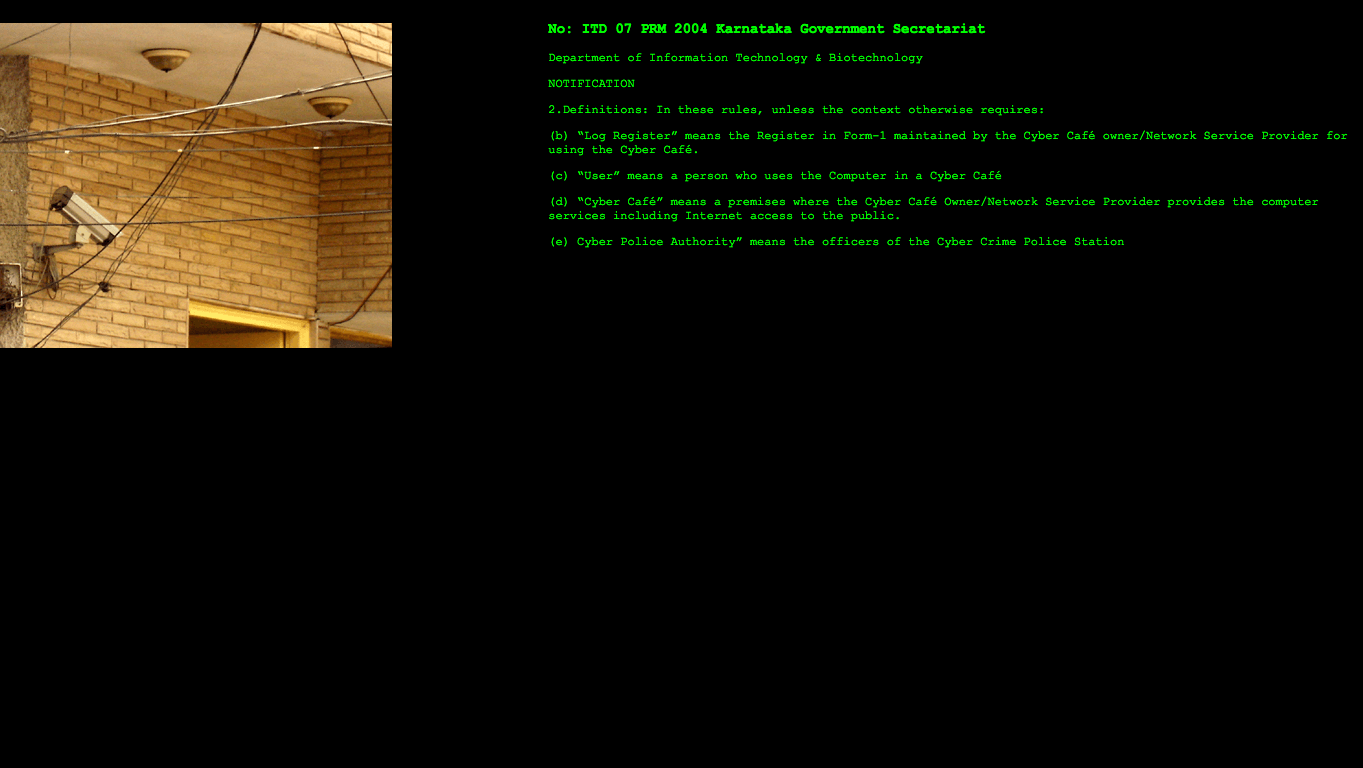Ectropy Index
2005/ HTML

The word “ectropy” means a general increase in organisation. It appears to have been developed in 196 by Willard V. Quine, a philosopher and mathematician, in the course of a series of discussions about information. It is now understood as an antonym of “entropy”. If entropy is the net increase in the tendency towards chaos within a system, then ectropy, being its opposite, suggests a congealing and thickening of information from a mass of things known, half known and unknown. While imagining ectropy it helps to think of a circle, that denotes a neutral state. Any inward collapse of the circle in a cardioid fashion denotes the loss of order, or entropy. The outward radiation of the circle, leading to an increase in its circumferential arc, is ectropy. An ectropic index, then, would be the measure of the increase of information, or of order, in a given system.
Ectropy Index takes these meanings to create its own tension between entropic and ectropic impulses, between the forces that tend to increase and those that decrease the levels of order and systematization (as opposed to randomness) within a system.
Interestingly, ectropy is also a disease of the eyelid, which especially afflicts hyper thorough bred (or inbred) hunting dogs and people who have artificial eyes. In this disease, the eyelids do not close satisfactorily, so that the orbit of the eye comes loose and protrudes, ectropically, from its socket. Eyes that do not blink, or sleep, or never shut to occasionally ‘not see’ something, tend towards ectropy. The eye that wants everything in order, all the time, should perhaps beware of ectropy.
It is said that we live today in a social realm increasingly marked by activities that have to do with information. Identity cards and identity theft, fingerprints and forgeries, surveillance cameras and shadows, data bodies and data crashes, biometrics and body sculpting, etc., seem to define significant features of the topography of contemporaneity. Here, in this zone, falls the glare of the searchlight, surrounded by the thickening fog of the unknowable. A host of everyday practices, ways of make-do and make-believe, provoke the anxieties of agencies deeply invested in knowing all that can be known. And all that can be known takes recourse to and refuge in the unknowable. This is the ground that this work walks through. Here you can find logs of ongoing research at Sarai on information and society, and a random harvest of images and fragments of information, from the World Wide Web, from the street nearby, from distant shores, and from right under our noses.
Welcome. Enter, and take your own measure of the ectropy index.
Sarai Media Lab: Raqs Media Collective (Monica Narula, Shuddhabrata Sengupta, Jeebesh Bagchi), Mrityunjay Chatterjee, Iram Ghufran
Additional Research: Taha Mehmood
Acknowledgements: Bhagwati Prasad, Lokesh, Shveta Sarda, Sarai Archive, and the people of Pooth Khurd village, Delhi
– Pg.- 154 Sensor-Census-Censor, Published by The Sarai Programme (2007)
















